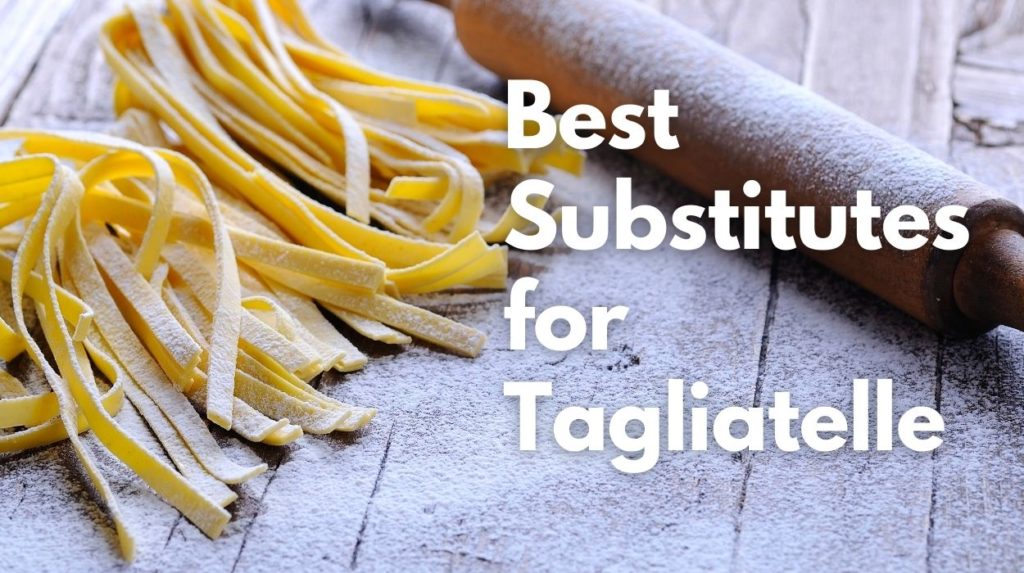
Tagliatelle, with its long wide ribbon-like shape, has become a staple for people who love pasta. It goes well with Bolognese sauce, making it an ideal dinner option. But what should you do when you run out of it.
Rather than running to the supermarket, you can try its substitutes like Fettuccine, Lasagna, Bucatini, etc. These alternatives shall recreate the same texture and consistency.
Wondering about any other alternatives? Don’t worry, as we have explained the 10 best Tagliatelle alternatives that one must try.
What is Tagliatelle?
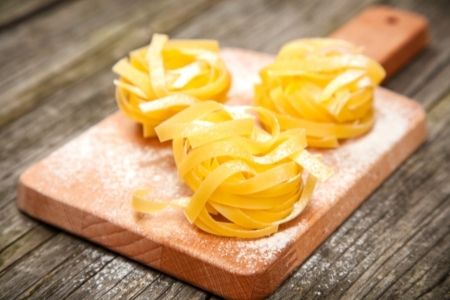
Tagliatelle is a type of pasta that generally looks like a thick ribbon, nearly ¼” wide. It was originally from Italy’s Marche and Emilia-Romagna regions and made of semolina (a type of durum wheat flour).
Well, the interesting fact about this pasta is that its name is derived from the Italian verb “tagliare,” which means “to cut,” so the literal translation of the word “tagliatelle” is cut up.
You can find this pasta in dry and fresh form and serve it with meat sauce. You can get them in straight ribbons or coiled nests, whatever you prefer.
The texture of this pasta is rough as it is made from coarsely ground semolina. Thus, it becomes porous and soaks up heavy sauces.
But what to do if you run out of tagliatelle pasta? To know other options, you can simply scroll down.
10 Best Tagliatelle Substitutes
1. Fettuccine
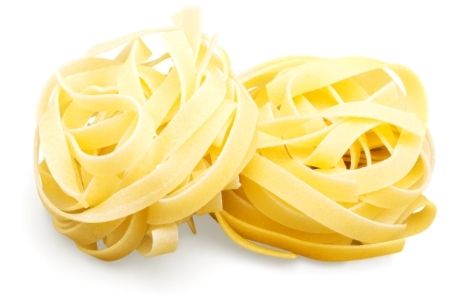
Many people get confused between tagliatelle and fettuccine as they look pretty similar. But the only difference is their width and thickness. Tagliatelle is a little wider and thinner than fettuccine.
Well, if you have got fettuccine in place of tagliatelle, then no problem. It can also work as a substitute. You can pair them with alfredo sauce, ragu sauce, or tomato sauce with meat.
These are available with eggs and without eggs. While boiling, it will take nearly 8-9 minutes.
2. Pappardelle

Pappardelle is another alternative that can take the place of tagliatelle in your recipe. It is also long and flat like ribbons. The only difference is pappardelle is larger; it is about 2-3 cm and 6.5-10mm.
It has a rough texture and compliments well with alfredo sauce, ragu sauce, and pappardelle dishes. It is used a lot in bolognese recipes.
If you are a vegetarian, then you can try them with creamy mushroom sauce. It is a wonderful addition to the strands of pappardelle to get an enticing meal.
3. Lasagna
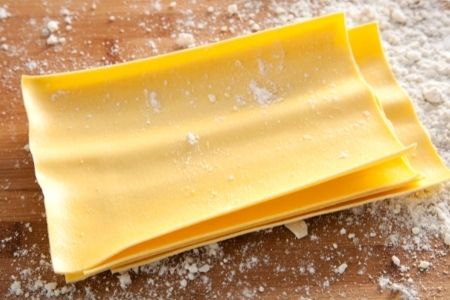
Did you know lasagna is the oldest and best type of pasta shape? It is rectangular or ribbon-shaped.
Although it is thicker than tagliatelle, you can still replace them in place of tagliatelle in your recipe. But you have to take care of the boiling point as it will take more time, nearly 15 minutes, which is more than tagliatelle.
Well, the lasagna noodles are boiled, then drained, and layered with a filling that varies according to regional customs.
If you use a fresh version of lasagna, then you need to pre-boil them before adding them to your sauce and baking process.
On the other hand, commercial versions allow for putting the pasta in a baking pan and filling it, as well as adding more liquid sauces to soften the pasta while it cooks.
4. Spaghetti
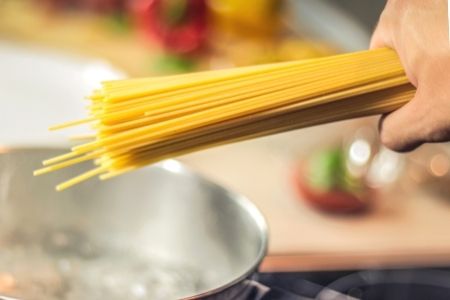
We all love spaghetti with rich tomato sauce, lemon zest with a few fresh basil leaves, and cheese.
But do you know that spaghetti was originally served like any other type of pasta, with just olive oil and cheese? It was first eaten with tomato sauce around the beginning of the 18th century.
This long string-like pasta is a staple food in Italy, and they are made from wheat semolina. It is the most well-known pasta shape, with roughly identical names in practically every language. And, you can exchange them with tagliatelle in your cuisine.
The boiling time can vary. It may take 9-13 minutes to boil down.
5. Linguine

You can try linguine pasta for tagliatelle. The only difference between these two kinds of pasta is the width. Linguine is not as wide as tagliatelle.
Well, it can work in all the recipes that call for tagliatelle. This flattened elliptical-shaped pasta is made from durum wheat semolina and is nearly 10 inches long and extremely thin, estimated at 3 mm wide.
This pasta is cooked in a big tall saucepan as it can break down easily in a small pan along with plenty of salted boiling water. They generally take 8-10 minutes to cook.
6. Bucatini
 Have you tried Bucatini? Well, even if not, then you can replace them for all the recipes that call for tagliatelle. Yes, it can work as its substitute. This type of pasta is in a long and narrow tube shape. Yes, you can also call them hollow spaghetti.
Have you tried Bucatini? Well, even if not, then you can replace them for all the recipes that call for tagliatelle. Yes, it can work as its substitute. This type of pasta is in a long and narrow tube shape. Yes, you can also call them hollow spaghetti.
Generally, it was produced in Rome, and its name is derived from the Italian word “buco,” meaning “hole.” Some people refer to them as perciatelli also.
You can serve them with meat, butter, tomato, and cream. If you are a seafood freak, then you can also serve them with seafood sauces.
Bucatini is mostly made out of durum wheat flour in the traditional method. On rare occasions, it is available in the whole wheat form. It will take a longer cooking time. Well, it carries a richer taste and has a more hearty texture.
7. Gemelli
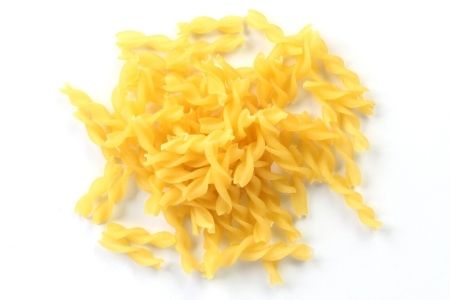
If you have Gemelli pasta but have prepared sauce for tagliatelle, then don’t worry. You can put Gemelli pasta in place of tagliatelle.
This pasta can hold sauce beautifully in the twisted curves as these are “twins,” which appear to be two different strands twisted together.
However, it’s actually one long strand folded in half and knotted together. That means you can enjoy rich, creamy pasta.
These are ideal for salads and vegetable dishes and take almost the same time as tagliatelle to boil down.
Don’t worry if you don’t have Gemelli. We have many other alternatives pending in this list that you can use in place of tagliatelle.
8. Fusilli
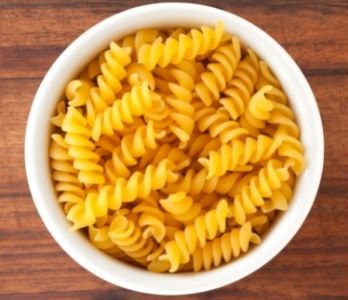
In the absence of tagliatelle pasta, you can try fusilli pasta too. This spiral or corkscrew-shaped pasta is good at holding sauce.
These were initially made in Southern Italy. They can work with any kind of sauce. Moreover, you can also add them to soup and salad.
It is made of hard durum wheat, and the texture of fusilli is dense and chewy because it can hold the shape of pasta even if you have boiled it for longer.
If you haven’t tried them baked, then take out your casserole, add some sauce, cream, cheese, and veggies and bake it. I am sure you will love it.
9. Farfalle
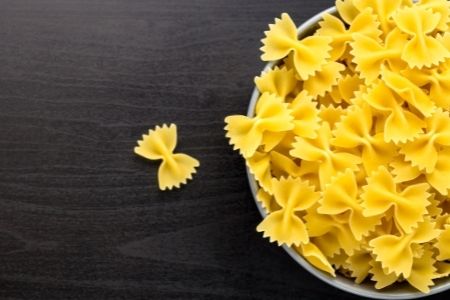
Farfalle is the most beautiful shaped pasta that can give you butterflies, quite literally, because they are shaped like butterflies. Haha, funny, right?
Well, speaking of farfalle pasta, the word means butterflies in Italy, and it initially originated in the Emilia-Romagna and Lombardia regions.
You can also try this pasta in place of tagliatelle. It is made from semolina, and Rigate, Tricolore, Farfalline (small), and Farfallone (large) are some of its variants.
It will take a maximum of 12 minutes to boil down, and you can add them to creamy mushroom sauce, alfredo sauce, or fresh tomato sauce. You can also use them in a salad or in pesto dressing.
10. Taglierini
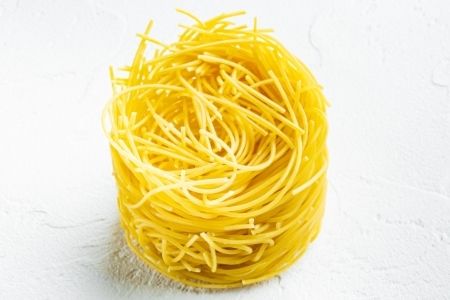
Another variant that can work in exchange for tagliatelle pasta is taglierini. It may sound similar to tagliatelle, but it is different than that. This pasta is thinner than tagliatelle and can be used in sturdy sauces and with seafood too.
It is referred to as tajarin in Piedmont and is traditionally made from flour, water, and eggs.
The amount of eggs and flour is more, and it is generally made from darker orange yolks.
Some individuals prefer the pasta dish tajarin al tartufi, which is made with truffles. Others may want to serve it with a meat roast sauce, in which case the dish is known as tajarin al sugo do arrosto.
If you want, you can try them with ragu sauce as well.
What cuisines are ideal for preparing tagliatelle pasta?
Italians frequently use tagliatelle in “spaghetti and meatballs” because it goes well with thick sauces and is easier to plate and manage after serving.
It is a quick and easy dish to prepare. For the best al dente bite, we recommend cooking fresh tagliatelle in generously salted water for 3-4 minutes. And also, make sure to taste a piece before removing it from the water.
Hang on! Can you prepare them at home? Well, the answer is absolutely yes, and if you want to know how to read the upcoming section.
How to make tagliatelle pasta at home?
Before preparing tagliatelle at home, you will need a few things. Make sure that you have the things listed below at home.
Things required
- 2 large eggs
- 200g of 00 flour (extra for dusting)
- Rolling pin
- Pasta cutter or knife
- Fork
Method
Step 1: You have to make a mound of flour on a clean work surface. Then take the help of your fingers and make a center in the mound that is deep enough to hold 2 large eggs.
Step 2: Then add eggs and beat them with a fork, slowly removing the flour from the well’s sides until the flour has completely absorbed the eggs. Once the mixture gets thick, start mixing the flour with your hands and a scrapper.
Step 3: If required, you can add a little water to make the mixture. And make it into the form of a small dough.
Step 4: Now clean the space and knead the dough using one hand’s heel. Keep your fingers high.
Step 5: You have to keep on kneading repeatedly. You can add some flour to prevent stickiness. Now, the dough will become smooth enough.
Step 6: You need to give the dough rest (at least 30 min) before giving it the shape. If you have time, you can keep them in the fridge and, after that, keep them at room temperature for nearly 1 hour.
Step 7: Now, dash some flour on your workspace and take out a small ball from the dough. Make it in a circle, and with the help of a rolling pin, make a sheet out of it. Make sure the thickness is nearly 1 mm.
Step 8: Make the sheet and cut it into 0.75cm strips to make tagliatelle. Unwrap the cut tagliatelle strips and spin them into little nests. To keep the nests from sticking, liberally dust them with flour.
Step 9: Before serving with your favorite sauce, cook the tagliatelle in boiling salted water for 3–5 minutes within a few hours.
How to Store Tagliatelle?
If you have made or bought fresh Tagliatelle, you will have to store it properly to avoid using any substitute in the future.
- You can transfer the pasta to an airtight container and refrigerate it. This will retain the freshness for a day or two.
- If you have the dough, you can wrap it in a plastic wrap and keep it in the refrigerator or freezer. This will keep it fresh for one month.
- If you have leftover Tagliatelle pasta, toss them in some flour and lay them on a baking tray. Air-fry for an hour and freeze it after wrapping it in a plastic wrap. This will last for eight-ten months.
FAQs
Is fettuccine and tagliatelle the same?
Tagliatelle is wider than fettuccine. Moreover, the former is thinner as well. While this might not affect the taste, the type of paste plays an important role in determining the consistency and texture of the dish.
What type of pasta is tagliatelle?
Tagliatelle is a ribbon pasta. While the people in Rome and Southern Italy refer to it as fettuccine, it is known as tagliatelle in Northern Italy.
Well, that’s a wrap!
You can try many options in place of tagliatelle pasta, like fettuccine, pappardelle, taglierini, lasagna, and spagheti.
Although fusilli, farfalle, and bucatini have whole different shapes, you can still use them as an alternative in creamy mushroom sauce, ragu sauce, or meatballs.
If you try any of the alternatives that are present on our list, do share your experience with us in the comments.



